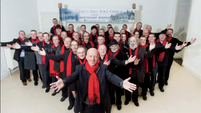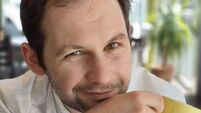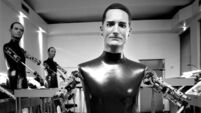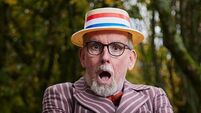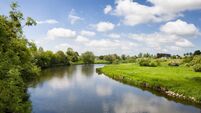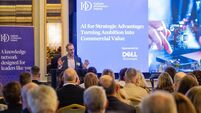Stevie G: Jazz Fest showed Cork at its peak
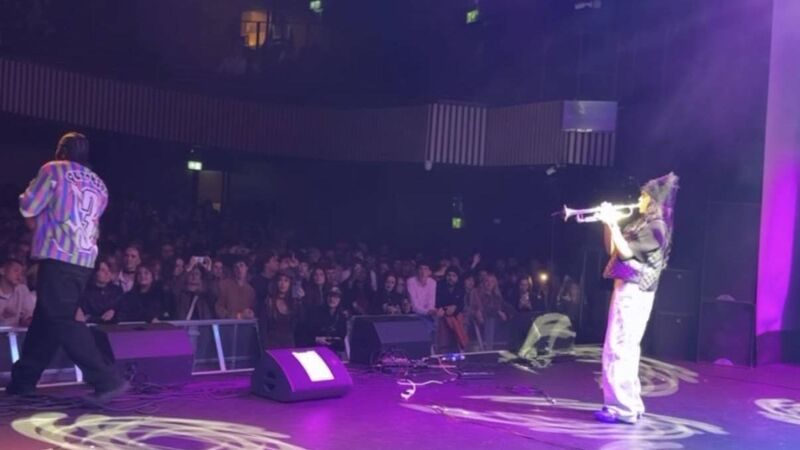
Young Cork artist Diamond playing alongside Monjola at the Cork Opera House during the Cork Jazz Festival.
Some of the more traditional October weekend weather stayed away, and the atmosphere outdoors benefited greatly.
Jazz bands marched through the streets, there were pop-up gigs and food markets, and our most walkable of cities was packed with music fans soaking up the best of what Cork has to offer.
Most of the shows on the official line-up sold out and, as always, all of the other venues, big and small, did their best to host something too.
I was out and about since Thursday and met many visitors and indeed Cork people who don’t go out as regularly anymore. Music fans of all ages found gigs to their tastes, and it would be impossible to cover it comprehensively here.
I was at about 20 shows, and I’ll mention some of them here, but as always with the festival, there were many that I missed too.
People often complain that there’s not much happening in Cork — which is an insult to the bands, DJs, promoters, venues, and others who are trying to make things happen week in week out.
The festival is one week where nearly everyone actively tries to come out and, as I mentioned last week, it really is Cork at its peak.
There was a lot of debate in advance of this year’s festival regarding the actual jazz output of the festival.
It’s a discussion that rears its head every few years, and it was an interesting debate. Even when the festival started in the late 70s, jazz was probably in the rearview mirror as regards to mainstream popularity, at a time when legends such as Herbie Hancock, George Benson, and George Duke were making soulful disco.
This era further alienated purists, who were often at odds with the innovations made by Miles Davis, Weather Report, and others.
Jazz, as we knew it, had changed completely, and a small city like Cork was obviously gonna be catering for a pretty loose definition of what the term meant.
Legendary artists such as Ella Fitzgerald, Buddy Rich, Lionel Hampton, and many more visited but, as the festival expanded in the 80s and 90s, it’s fair to say that there was as much blues, soul, rock, and pop as jazz at the festival. There was always music that had little to do with jazz. As the hip-hop and house movements gathered pace here, there was somewhat of an increase in the awareness of many legacy jazz acts.
In the modern era, we’ve had visits from many of those greats too.
Lots have now passed, but a new generation has emerged, and the festival has welcomed Kamasi Washington, Gregory Porter, Robert Glasper, and Roy Hargrove.
These are all artists spearheading an increasing mainstream awareness in jazz, and they are all artists who have linked the rich heritage of the music to the modern era.
The more cutting edge underground jazz artists, such as Nubya Garcia, are unlikely to ever be hitting the pop charts, but wholly embody everything that is great about jazz in 2025. A blazing gig in the Everyman on Sunday was wonderfully received at the same venue that also hosted Adrian Younge that evening. I missed most of the Triskel programme, which was terrific, as DJing commitments kept me largely at the Cork Opera House and the Kino this weekend.
Highlights in the Kino included JarJarJr, Zaska, and Oceanna, while my visits to Live at St Luke’s for Saul Williams and Carlos Nino were very rewarding.
The Cork Opera House line-up was unbelievably good this weekend, and Cymande, Orchestra Baobab, Annie and the Caldwells, Lee Fields and Toshin were all amazing.
The Jeff Mills Tomorrow comes to Harvest project was a fitting end to Sunday, while Pharcyde, Summer Pearl, Monjola, Aby Coulibaly, and Rejjie Snow kept the hip-hop and soul fans happy.
I can only briefly mention another great highlight for me personally, which was seeing Projective, Syano, and Smithereens in St Luke’s. Sam Healy smashed it in St Luke’s, while Cork legends Fixity and Estratos were amazing in the Green room of the Opera House!
